1. Plosa EJ, Esbenshade JC, Fuller MP, Weitkamp JH. Cytomegalovirus infection. Pediatr Rev. 2012; 33(4):156–163. PMID:
22474112.

2. Ho M. Epidemiology of cytomegalovirus infections. Rev Infect Dis. 1990; 12(Suppl 7):S701–10. PMID:
2173099.

3. Diosi P. Cytomegalovirus (CMV) in cervical secretion and breast milk. A thirty years perspective. Roum Arch Microbiol Immunol. 1997; 56(3-4):165–178. PMID:
9745329.

4. Waters A, Jennings K, Fitzpatrick E, Coughlan S, Molloy EJ, De Gascun CF, et al. Incidence of congenital cytomegalovirus infection in Ireland: implications for screening and diagnosis. J Clin Virol. 2014; 59(3):156–160. PMID:
24461765.


5. Yamaguchi A, Oh-Ishi T, Arai T, Sakata H, Adachi N, Asanuma S, et al. Screening for seemingly healthy newborns with congenital cytomegalovirus infection by quantitative real-time polymerase chain reaction using newborn urine: an observational study. BMJ Open. 2017; 7(1):e013810.

6. Kenneson A, Cannon MJ. Review and meta-analysis of the epidemiology of congenital cytomegalovirus (CMV) infection. Rev Med Virol. 2007; 17(4):253–276. PMID:
17579921.


7. Vaudry W, Rosychuk RJ, Lee BE, Cheung PY, Pang X, Preiksaitis JK. Congenital cytomegalovirus infection in high-risk Canadian infants: report of a pilot screening study. Can J Infect Dis Med Microbiol. 2010; 21(1):e12–9. PMID:
21358874.

8. Álvarez Domínguez E, Figueras Aloy J, Botet Mussons F, Marcos Maeso MA, Pérez Fernández JM. Screening for cytomegalovirus infection in very low birth weight infants. An Pediatr (Barc). 2013; 79(1):3–9. PMID:
23228440.

9. Hamele M, Flanagan R, Loomis CA, Stevens T, Fairchok MP. Severe morbidity and mortality with breast milk associated cytomegalovirus infection. Pediatr Infect Dis J. 2010; 29(1):84–86. PMID:
19884873.

10. Lanzieri TM, Dollard SC, Josephson CD, Schmid DS, Bialek SR. Breast milk-acquired cytomegalovirus infection and disease in VLBW and premature infants. Pediatrics. 2013; 131(6):e1937–45. PMID:
23713111.

11. Kurath S, Halwachs-Baumann G, Müller W, Resch B. Transmission of cytomegalovirus via breast milk to the prematurely born infant: a systematic review. Clin Microbiol Infect. 2010; 16(8):1172–1178. PMID:
20670291.


12. Section on Breastfeeding. Breastfeeding and the use of human milk. Pediatrics. 2012; 129(3):e827–41. PMID:
22371471.
13. Buxmann H, Falk M, Goelz R, Hamprecht K, Poets CF, Schloesser RL. Feeding of very low birth weight infants born to HCMV-seropositive mothers in Germany, Austria and Switzerland. Acta Paediatr. 2010; 99(12):1819–1823. PMID:
20670309.


15. Lopes AA, Champion V, Mitanchez D. Nutrition of preterm infants and raw breast milk-acquired cytomegalovirus infection: French national audit of clinical practices and diagnostic approach. Nutrients. 2018; 10(8):1119.


16. Hamprecht K, Goelz R, Maschmann J. Breast milk and cytomegalovirus infection in preterm infants. Early Hum Dev. 2005; 81(12):989–996. PMID:
16278059.


17. Bryant P, Morley C, Garland S, Curtis N. Cytomegalovirus transmission from breast milk in premature babies: Does it matter? Arch Dis Child Fetal Neonatal Ed. 2002; 87(2):F75–7. PMID:
12193509.

18. Mehler K, Oberthuer A, Lang-Roth R, Kribs A. High rate of symptomatic cytomegalovirus infection in extremely low gestational age preterm infants of 22-24 weeks' gestation after transmission via breast milk. Neonatology. 2014; 105(1):27–32. PMID:
24247027.


19. Anne-Aurélie L, Souad B, Leila K. Clinical findings and autopsy of a preterm infant with breast milk-acquired cytomegalovirus infection. AJP Rep. 2016; 6(2):e198–202. PMID:
27257513.

20. Cheong JL, Cowan FM, Modi N. Gastrointestinal manifestations of postnatal cytomegalovirus infection in infants admitted to a neonatal intensive care unit over a five year period. Arch Dis Child Fetal Neonatal Ed. 2004; 89(4):F367–F369. PMID:
15210678.

21. Maschmann J, Hamprecht K, Dietz K, Jahn G, Speer CP. Cytomegalovirus infection of extremely low-birth weight infants via breast milk. Clin Infect Dis. 2001; 33(12):1998–2003. PMID:
11712092.


22. Maschmann J, Hamprecht K, Weissbrich B, Dietz K, Jahn G, Speer CP. Freeze-thawing of breast milk does not prevent cytomegalovirus transmission to a preterm infant. Arch Dis Child Fetal Neonatal Ed. 2006; 91(4):F288–90. PMID:
16790732.

23. Brecht KF, Goelz R, Bevot A, Krägeloh-Mann I, Wilke M, Lidzba K. Postnatal human cytomegalovirus infection in preterm infants has long-term neuropsychological sequelae. J Pediatr. 2015; 166(4):834–839.e1. PMID:
25466679.


24. Munn Z, Moola S, Lisy K, Riitano D, Tufanaru C. Methodological guidance for systematic reviews of observational epidemiological studies reporting prevalence and cumulative incidence data. Int J Evid-Based Healthc. 2015; 13(3):147–153. PMID:
26317388.


25. Wakabayashi H, Mizuno K, Kohda C, Negoro T, Maekawa C, Sawato S, et al. Low HCMV DNA copies can establish infection and result in significant symptoms in extremely preterm infants: a prospective study. Am J Perinatol. 2012; 29(5):377–382. PMID:
22307845.

26. Romero-Gómez MP, Cabrera M, Montes-Bueno MT, Cendejas-Bueno E, Segovia C, Pastrana N, et al. Evaluation of cytomegalovirus infection in low-birth weight children by breast milk using a real-time polymerase chain reaction assay. J Med Virol. 2015; 87(5):845–850. PMID:
25690782.

27. Narvaez-Arzate RV, Olguin-Mexquitic L, Lima-Rogel V, Noyola DE, Barrios-Compean LM, Villegas-Alvarez C. Cytomegalovirus infection in infants admitted to a neonatal intensive care unit. J Matern Fetal Neonatal Med. 2013; 26(11):1103–1106. PMID:
23356634.


28. Gonzalez Barbera EM, Acosta Boga B, Cernada Badia M, Rosingh AW, Cordoba Cortijo J, Gobernado M. Congenital and neonatal cytomegalovirus infection in pre-term neonates. Clin Microbiol Infect. 2010; 16(Suppl 2):S426.
29. Stagno S, Reynolds DW, Pass RF, Alford CA. Breast milk and the risk of cytomegalovirus infection. N Engl J Med. 1980; 302(19):1073–1076. PMID:
6245360.


30. Richardson BA, John-Stewart G, Atkinson C, Nduati R, Ásbjörnsdóttir K, Boeckh M, et al. Vertical cytomegalovirus transmission from HIV-infected women randomized to formula-feed or breastfeed their infants. J Infect Dis. 2016; 213(6):992–998. PMID:
26518046.


31. Hosseini M, Esmaili HA, Abdoli Oskouei S, Gojazadeh M, MokariYamchi Z, Layegh V, et al. Evaluation of the freeze-thawing method in reducing viral load of cytomegalovirus in breast milk of mothers of preterm infants. Breastfeed Med. 2016; 11(10):557–560. PMID:
27754707.


32. Jim WT, Shu CH, Chiu NC, Kao HA, Hung HY, Chang JH, et al. Transmission of cytomegalovirus from mothers to preterm infants by breast milk. Pediatr Infect Dis J. 2004; 23(9):848–851. PMID:
15361725.


33. Jim WT, Shu CH, Chiu NC, Chang JH, Hung HY, Peng CC, et al. High cytomegalovirus load and prolonged virus excretion in breast milk increase risk for viral acquisition by very low birth weight infants. Pediatr Infect Dis J. 2009; 28(10):891–894. PMID:
19687768.


34. Chiavarini M, Bragetti P, Sensini A, Cenci E, Castronari R, Rossi MJ, et al. Breastfeeding and transmission of cytomegalovirus to preterm infants. Case report and kinetic of CMV-DNA in breast milk. Ital J Pediatr. 2011; 37(1):6. PMID:
21247481.



35. Diosi P, Babusceac L, Nevinglovschi O, Kun-Stoicu G. Cytomegalovirus infection associated with pregnancy. Lancet. 1967; 290(7525):1063–1066.

36. Resch B. The dilemma of breastfeeding very low birth weight infants at risk for symptomatic cytomegalovirus infection. J Matern Fetal Neonatal Med. 2013; 26(15):1562. PMID:
23565920.


37. Buxmann H, Miljak A, Fischer D, Rabenau HF, Doerr HW, Schloesser RL. Incidence and clinical outcome of cytomegalovirus transmission via breast milk in preterm infants ≤31 weeks. Acta Paediatr. 2009; 98(2):270–276. PMID:
19021592.


38. Martins-Celini FP, Yamamoto AY, Passos DM, do Nascimento SD, Lima EV, Di Giovanni CM, et al. Incidence, risk factors, and morbidity of acquired postnatal cytomegalovirus infection among preterm infants fed maternal milk in a highly seropositive population. Clin Infect Dis. 2016; 63(7):929–936. PMID:
27313267.


39. Lombardi G, Garofoli F, Manzoni P, Stronati M. Breast milk-acquired cytomegalovirus infection in very low birth weight infants. J Matern Fetal Neonatal Med. 2012; 25(Suppl 3):57–62. PMID:
23016620.


40. Vochem M, Hamprecht K, Jahn G, Speer CP. Transmission of cytomegalovirus to preterm infants through breast milk. Pediatr Infect Dis J. 1998; 17(1):53–58. PMID:
9469396.


41. Bergman KA, Benne CA, Doedens RA, Bos AF. Primary cytomegalovirus infection in the postnatal period. Ned Tijdschr Geneeskd. 2006; 150(16):909–912. PMID:
16686092.

42. Yasuda A, Kimura H, Hayakawa M, Ohshiro M, Kato Y, Matsuura O, et al. Evaluation of cytomegalovirus infections transmitted via breast milk in preterm infants with a real-time polymerase chain reaction assay. Pediatrics. 2003; 111(6 Pt 1):1333–1336. PMID:
12777549.


43. Croly-Labourdette S, Vallet S, Gagneur A, Gremmo-Feger G, Legrand-Quillien MC, Ansquer H, et al. Pilot epidemiologic study of transmission of cytomegalovirus from mother to preterm infant by breastfeeding. Arch Pediatr. 2006; 13(7):1015–1021. PMID:
16616463.

44. Omarsdottir S, Casper C, Zweygberg Wirgart B, Grillner L, Vanpée M. Transmission of cytomegalovirus to extremely preterm infants through breast milk. Acta Paediatr. 2007; 96(4):492–494. PMID:
17391465.


45. Capretti MG, Lanari M, Lazzarotto T, Gabrielli L, Pignatelli S, Corvaglia L, et al. Very low birth weight infants born to cytomegalovirus-seropositive mothers fed with their mother's milk: a prospective study. J Pediatr. 2009; 154(6):842–848. PMID:
19230896.


46. Hayashi S, Kimura H, Oshiro M, Kato Y, Yasuda A, Suzuki C, et al. Transmission of cytomegalovirus via breast milk in extremely premature infants. J Perinatol. 2011; 31(6):440–445. PMID:
21164427.


47. Omarsdottir S, Casper C, Navér L, Legnevall L, Gustafsson F, Grillner L, et al. Cytomegalovirus infection and neonatal outcome in extremely preterm infants after freezing of maternal milk. Pediatr Infect Dis J. 2015; 34(5):482–489. PMID:
25879648.


48. Mosca F, Pugni L, Barbi M, Binda S. Transmission of cytomegalovirus. Lancet. 2001; 357(9270):1800.

49. Meier J, Lienicke U, Tschirch E, Krüger DH, Wauer RR, Prösch S. Human cytomegalovirus reactivation during lactation and mother-to-child transmission in preterm infants. J Clin Microbiol. 2005; 43(3):1318–1324. PMID:
15750102.



50. Josephson CD, Caliendo AM, Easley KA, Knezevic A, Shenvi N, Hinkes MT, et al. Blood transfusion and breast milk transmission of cytomegalovirus in very low-birth-weight infants: a prospective cohort study. JAMA Pediatr. 2014; 168(11):1054–1062. PMID:
25243446.


51. Yoo HS, Sung SI, Jung YJ, Lee MS, Han YM, Ahn SY, et al. Prevention of cytomegalovirus transmission via breast milk in extremely low birth weight infants. Yonsei Med J. 2015; 56(4):998–1006. PMID:
26069123.



52. Chang TS, Wiener J, Dollard SC, Amin MM, Ellington S, Chasela C, et al. Effect of cytomegalovirus infection on breastfeeding transmission of HIV and on the health of infants born to HIV-infected mothers. AIDS. 2015; 29(7):831–836. PMID:
25985405.

53. Vollmer B, Seibold-Weiger K, Schmitz-Salue C, Hamprecht K, Goelz R, Krageloh-Mann I, et al. Postnatally acquired cytomegalovirus infection via breast milk: effects on hearing and development in preterm infants. Pediatr Infect Dis J. 2004; 23(4):322–327. PMID:
15071286.


54. Neuberger P, Hamprecht K, Vochem M, Maschmann J, Speer CP, Jahn G, et al. Case-control study of symptoms and neonatal outcome of human milk-transmitted cytomegalovirus infection in premature infants. J Pediatr. 2006; 148(3):326–331. PMID:
16615961.


55. Guerrero Martínez A, Cernada Badía M, Brugada Montaner M, Gormaz Moreno M, Gimeno Navarro A, Valiente Armero A, et al. Predictive factors of postnatal cytomegalovirus infection in extremely low birth weight infants. J Perinat Med. 2015; 43(s1):
56. Kumar ML, Nankervis GA, Jacobs IB, Ernhart CB, Glasson CE, McMillan PM, et al. Congenital and postnatally acquired cytomegalovirus infections: long-term follow-up. J Pediatr. 1984; 104(5):674–679. PMID:
6325654.


57. Jim WT, Chiu NC, Ho CS, Shu CH, Chang JH, Hung HY, et al. Outcome of preterm infants with postnatal cytomegalovirus infection via breast milk: a two-year prospective follow-up study. Medicine (Baltimore). 2015; 94(43):e1835. PMID:
26512588.
58. Baerts W, van Straaten HL. Auditory neuropathy associated with postnatally acquired cytomegalovirus infection in a very preterm infant. BMJ Case Rep. 2010; 2010:bcr0120102689.

59. Bevot A, Hamprecht K, Krägeloh-Mann I, Brosch S, Goelz R, Vollmer B. Long-term outcome in preterm children with human cytomegalovirus infection transmitted via breast milk. Acta Paediatr. 2012; 101(4):e167–72. PMID:
22111513.

60. Goelz R, Meisner C, Bevot A, Hamprecht K, Kraegeloh-Mann I, Poets CF. Long-term cognitive and neurological outcome of preterm infants with postnatally acquired CMV infection through breast milk. Arch Dis Child Fetal Neonatal Ed. 2013; 98(5):F430–3. PMID:
23603882.

61. Wang T, Wang M, Duan G, Chen X, He Y. Discrepancy in impact of maternal milk on vertical transmission between hepatitis B virus and human cytomegalovirus. Int J Infect Dis. 2015; 37:1–5. PMID:
26072037.


62. Harmsen MC, Swart PJ, de Béthune MP, Pauwels R, De Clercq E, The TH, et al. Antiviral effects of plasma and milk proteins: lactoferrin shows potent activity against both human immunodeficiency virus and human cytomegalovirus replication in vitro. J Infect Dis. 1995; 172(2):380–388. PMID:
7622881.


63. Asanuma H, Numazaki K, Nagata N, Hotsubo T, Horino K, Chiba S. Role of milk whey in the transmission of human cytomegalovirus infection by breast milk. Microbiol Immunol. 1996; 40(3):201–204. PMID:
8934674.


64. Numazaki K, Asanuma H, Hotsubo T, Chiba S. Anti-human cytomegalovirus effects of breast milk. J Infect Dis. 1996; 174(2):444–445. PMID:
8699086.


65. Hamprecht K, Maschmann J, Vochem M, Dietz K, Speer CP, Jahn G. Epidemiology of transmission of cytomegalovirus from mother to preterm infant by breastfeeding. Lancet. 2001; 357(9255):513–518. PMID:
11229670.


66. Twite N, Andrei G, Kummert C, Donner C, Perez-Morga D, De Vos R, et al. Sequestration of human cytomegalovirus by human renal and mammary epithelial cells. Virology. 2014; 460-461:55–65. PMID:
25010270.

67. Foulks A, Willeitner A. A prospective, observational study on the pathogenesis of acquired cytomegalovirus (CMV) infection in premature infants less than 30 weeks' gestational age. J Investig Med. 2012; 60(1):374.
68. Hamprecht K, Goelz R. Postnatal cytomegalovirus infection through human milk in preterm infants: transmission, clinical presentation, and prevention. Clin Perinatol. 2017; 44(1):121–130. PMID:
28159200.

69. Doctor S, Friedman S, Dunn MS, Asztalos EV, Wylie L, Mazzulli T, et al. Cytomegalovirus transmission to extremely low-birthweight infants through breast milk. Acta Paediatr. 2005; 94(1):53–58. PMID:
15858961.


70. Ben-Shoshan M, Mandel D, Lubetzky R, Dollberg S, Mimouni FB. Eradication of cytomegalovirus from human milk by microwave irradiation: a pilot study. Breastfeed Med. 2016; 11(4):186–187. PMID:
27058825.


71. Lloyd ML, Hod N, Jayaraman J, Marchant EA, Christen L, Chiang P, et al. Inactivation of cytomegalovirus in breast milk using ultraviolet-C irradiation: opportunities for a new treatment option in breast milk banking. PLoS One. 2016; 11(8):e0161116. PMID:
27537346.

73. Welsh JK, Arsenakis M, Coelen RJ, May JT. Effect of antiviral lipids, heat, and freezing on the activity of viruses in human milk. J Infect Dis. 1979; 140(3):322–328. PMID:
227969.


74. Curtis N, Chau L, Garland S, Tabrizi S, Alexander R, Morley CJ. Cytomegalovirus remains viable in naturally infected breast milk despite being frozen for 10 days. Arch Dis Child Fetal Neonatal Ed. 2005; 90(6):F529–30. PMID:
16244213.

75. Hamprecht K, Witzel S, Maschmann J, Dietz K, Baumeister A, Mikeler E, et al. Rapid detection and quantification of cell free cytomegalovirus by a high-speed centrifugation-based microculture assay: comparison to longitudinally analyzed viral DNA load and pp67 late transcript during lactation. J Clin Virol. 2003; 28(3):303–316. PMID:
14522069.


76. Forsgren M. Cytomegalovirus in breast milk: reassessment of pasteurization and freeze-thawing. Pediatr Res. 2004; 56(4):526–528. PMID:
15388851.


77. Miron D, Brosilow S, Felszer K, Reich D, Halle D, Wachtel D, et al. Incidence and clinical manifestations of breast milk-acquired cytomegalovirus infection in low birth weight infants. J Perinatol. 2005; 25(5):299–303. PMID:
15674408.


78. Miller J, Tonkin E, Damarell RA, McPhee AJ, Suganuma M, Suganuma H, et al. A systematic review and meta-analysis of human milk feeding and morbidity in very low birth weight infants. Nutrients. 2018; 10(6):707.


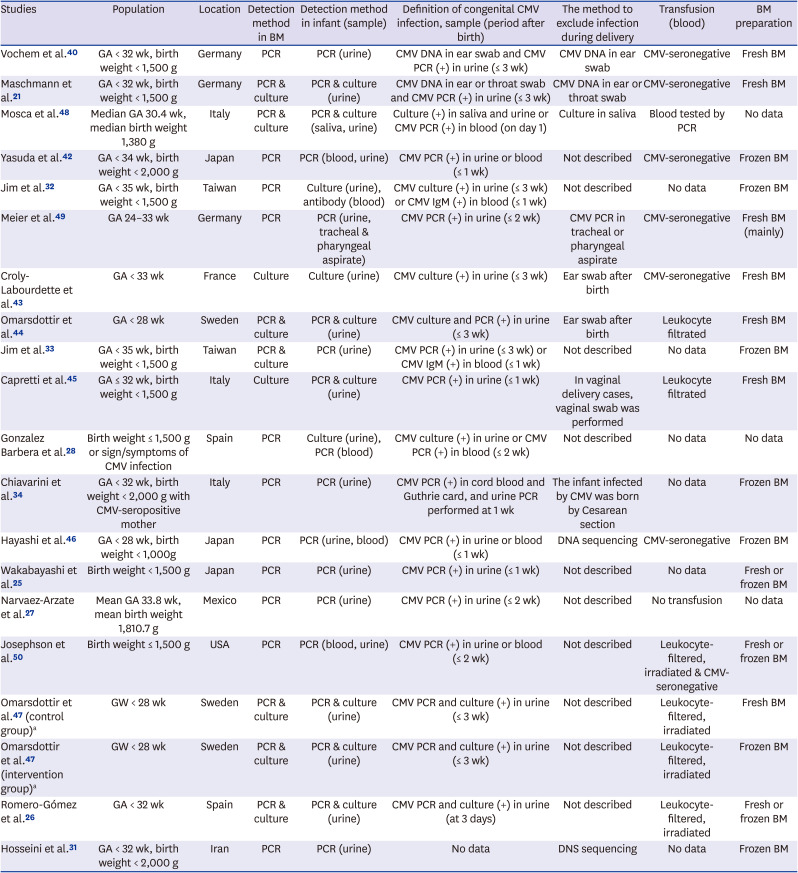
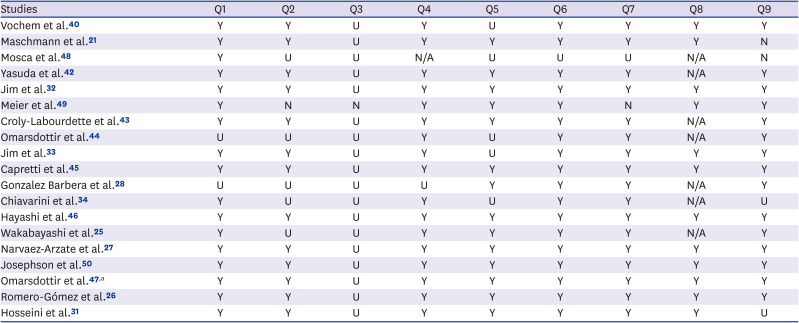




 PDF
PDF Citation
Citation Print
Print



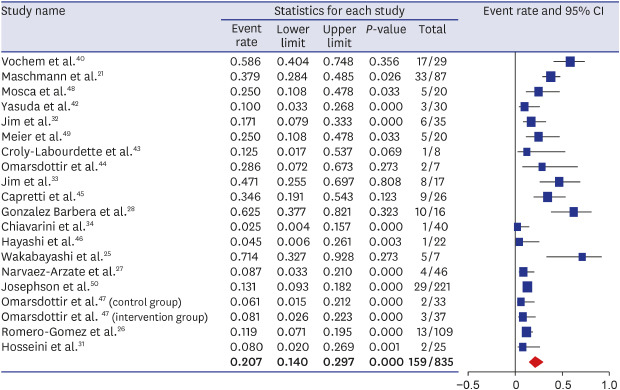
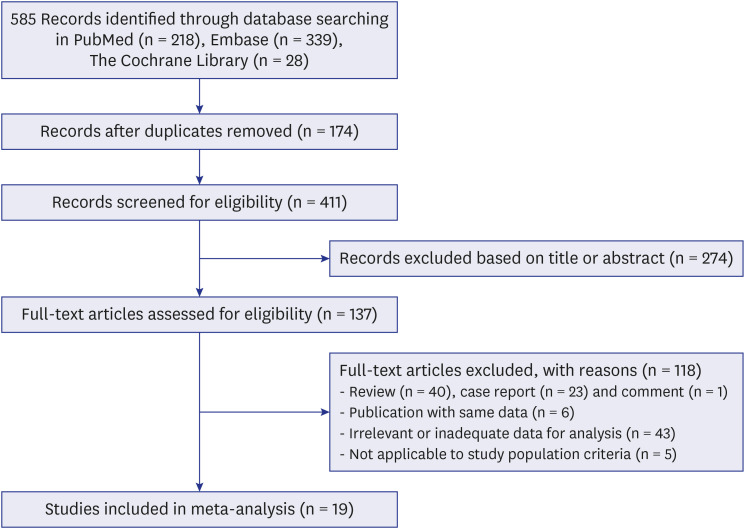
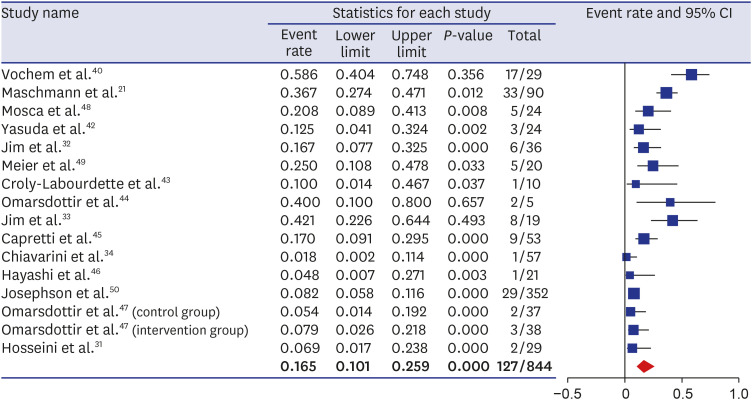

 XML Download
XML Download